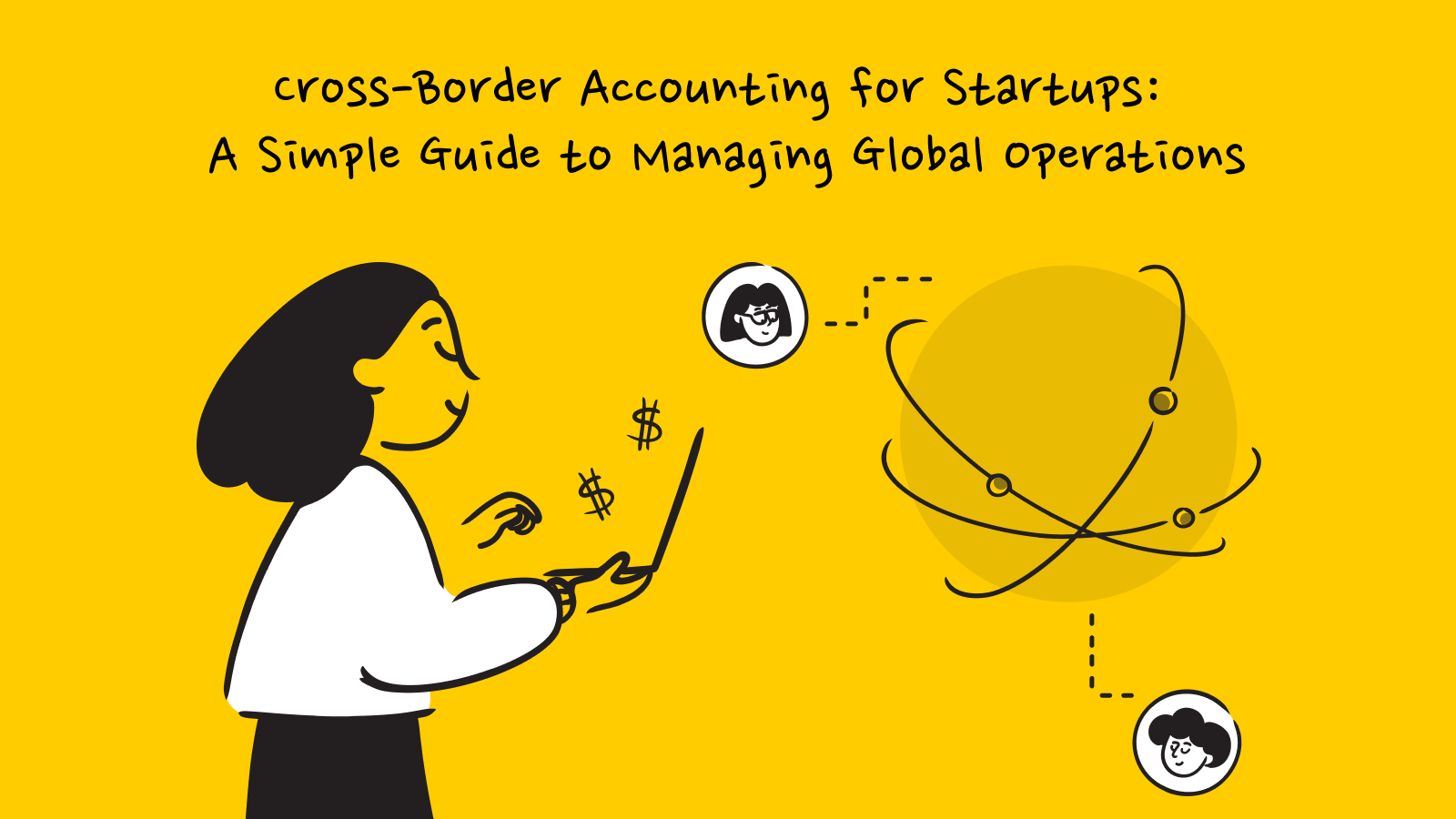IRS Form W-8: What Startups and Foreign Payees Need to Know

If your startup pays international contractors, vendors, or partners, you’re responsible for collecting the correct IRS tax form before making a payment. For non-US recipients, that form is usually a version of Form W-8.
Submitting a valid W-8 helps reduce or eliminate the standard 30% US tax withholding on cross-border payments. It also ensures you report payments correctly and avoid IRS penalties. This guide walks you through who needs Form W-8, which version to use, when to submit it, and how to avoid the most common filing mistakes.
What Is Form W-8?
Form W-8 is an IRS document used by non-US individuals and entities to certify that they are not subject to US income tax in the same way as US residents. It allows them to claim foreign status and, where applicable, benefits under a tax treaty between their home country and the United States.
US citizens, US residents, and US-registered businesses should never submit a W-8 form. They must use Form W-9 instead to provide their taxpayer identification number and certify their US tax status.
Who needs a W-8 form:-
- Non-US freelancers and consultants receiving payment from a US company for services or royalties
- Foreign companies invoicing US clients or platforms for business income
- Overseas investment firms or platforms collecting US-sourced dividends, interest, or capital gains
- Foreign governments, nonprofits, or financial intermediaries receiving US-source income and seeking withholding exemptions
Which W-8 Form Applies to You?
The IRS provides five versions of Form W-8, and each is tailored to a different type of foreign payee. Selecting the correct version is essential using the wrong one can invalidate treaty claims or delay your payments.
i) W-8BEN (for Individuals)
Form W-8BEN is used by non-US individuals receiving US-sourced income such as independent contractors, consultants, or freelancers. It certifies that the person is a foreign resident and, if eligible, allows them to claim reduced tax withholding under a treaty between their country and the US This is the most common form used by individual foreign payees.
ii) W-8BEN-E (for Entities)
Form W-8BEN-E is used by non-US entities, such as private limited companies, partnerships, or LLPs. It serves a similar purpose as the W-8BEN but is structured for businesses instead of individuals. Startups often collect W-8BEN-E from foreign vendors or agencies providing software, services, or consulting from outside the US.
iii) W-8ECI (Effectively Connected Income)
If a foreign individual or business earns US-connected income that is effectively tied to a US trade or business, they should file Form W-8ECI. This includes situations where a foreign company has a US office, employees, or agents and earns income treated as US business revenue. Filing W-8ECI prevents automatic 30% withholding, as the income will be taxed through a standard US tax return.
iv) W-8EXP (Exempt Payees)
Foreign governments, tax-exempt organizations, international institutions, and some central banks use Form W-8EXP to claim exemption from withholding on specific income types. These entities must meet eligibility criteria under US tax law to qualify for withholding relief.
v) W-8IMY (Intermediaries)
Form W-8IMY is used by intermediaries or flow-through entities such as investment platforms, custodians, or foreign partnerships that receive US-sourced income on behalf of others. It allows them to pass through income and related tax documentation for the underlying beneficial owners.
Why Submit a W-8 Form?
A properly completed Form W-8 helps foreign individuals and entities avoid default 30% US withholding and ensures that payments are processed smoothly. For startups, collecting W-8 forms is a legal requirement when working with international contractors or vendors. For payees, it protects against over-taxation and supports faster payments.
Here’s a breakdown of the specific benefits of having a valid W-8 form on file:
i) Avoid unnecessary 30% withholding on US-source payments
By default, the IRS requires 30% tax withholding on payments to foreign persons unless a valid W-8 form is submitted. Withholding is applied to the gross amount not net so failing to submit the form can significantly reduce your take-home pay as a contractor or your margins as a vendor.
ii) Claim tax treaty benefits and reduce withholding rates
Many countries have tax treaties with the US that lower or eliminate withholding on certain types of income. Form W-8BEN (for individuals) and W-8BEN-E (for entities) allow you to identify your country of residence and claim the specific treaty article that applies. Without this, you’ll be taxed at the full 30% rate even if a treaty exists.
iii) Ensure correct 1042-S tax reporting at year-end
The W-8 form provides essential details (like country of residence and foreign tax ID) needed to generate IRS Form 1042-S. This form summarizes the income you received and tax withheld. If you don’t submit a W-8, your information may be reported incorrectly or not at all causing compliance issues later.
iv) Speed up onboarding and payment processing
US companies are legally required to withhold tax if a valid form is not on file. Submitting the correct W-8 upfront reduces back-and-forth, prevents payment delays, and keeps the payer IRS-compliant. Many startups now automate this check as part of their contractor onboarding process.
When and How to Submit Form W-8?
Foreign individuals and entities should submit the appropriate Form W-8 before receiving any payments from a US company. The form ensures correct withholding and reporting from the start of the relationship. If no form is provided, the US payer must apply the default 30% withholding rate.
Unlike most IRS forms, Form W-8 is not sent directly to the IRS. Instead, it’s submitted to the US business or platform making the payment. That company uses the form to determine how much tax to withhold and how to report your income at year-end.
Follow this process to submit form W-8:-
- Submit before the first payment is made. US payers must withhold at the full 30% rate if no form is on file.
- Send the form directly to the US payer, not to the IRS. The company making the payment is responsible for retaining the form.
- Forms remain valid for the year signed and the next three full calendar years. For example, a form signed in May 2025 remains valid through December 31, 2028.
- Resubmit if any key information changes. This includes name, country of residence, tax status, or foreign TIN.
What Information Is Required on Form W-8BEN (Individual)?
If you’re a non-US individual receiving payments from a US company, you’ll likely need to submit Form W-8BEN. This form confirms your foreign status and allows you to claim tax treaty benefits reducing or eliminating US withholding on your payments.
To be valid, the form must be fully completed and signed. Any missing section or unsigned submission may result in automatic 30% withholding.
Follow these steps to fill out Form W-8BEN:-
Step 1 - Legal name (Line 1)
Enter your full name exactly as it appears in your passport or official documents.
Step 2 - Country of citizenship (Line 2)
List the country where you hold legal citizenship, not where you’re currently residing or working.
Step 3 - Permanent residence address (Line 3)
Provide your permanent foreign address. It must not be a US address or a P.O. Box.
Step 4 - Mailing address (Line 4)
Optional. Use this if it differs from your permanent address (e.g., if you're living abroad temporarily).
Step 5 - US TIN (Line 5)
Optional in most cases. If you’ve received a US Individual Taxpayer Identification Number (ITIN), enter it here.
Step 6 - Foreign TIN (Line 6)
Required if you are claiming treaty benefits. For Indian residents, this would be your PAN number.
Step 7 - Date of birth (Line 8)
Enter in MM-DD-YYYY format.
Step 8 - Treaty country and article (Part II)
If you're claiming reduced withholding, specify your country’s tax treaty with the US and the relevant article that applies to your income.
Step 9 - Signature and date (Part III)
You must sign and date the form. Without this, the form is invalid and cannot be used to reduce withholding.
What Happens if You Don’t Submit W-8 or Use the Wrong W-8 Form?
If a US company doesn’t have a valid W-8 form on file for a foreign payee, they are legally required to withhold 30% of the gross payment. This rule applies regardless of the income amount or payment frequency. Using the wrong version of the form can have the same result as not submitting one at all.
This not only reduces the net amount received by the payee but can also create compliance issues for the US company, especially if income is underreported or tax is withheld incorrectly.
Here are the consequences of non-compliance:-
i) 30% withholding on gross payments
Without a valid W-8 form, the payer must withhold tax at the maximum rate, even if a tax treaty would allow a lower rate or exemption.
ii) Missed treaty benefits
If you don’t properly complete the treaty section of the W-8BEN or W-8BEN-E, the IRS will not honor any withholding reductions, even if your country has a treaty.
iii) Delayed payments or IRS penalties
US payers may delay your payment while waiting for a valid form. If they pay without it, they may face penalties for under-withholding.
iv) Incomplete or rejected 1042-S reporting
Without the required form, the US payer may be unable to file an accurate 1042-S, leading to compliance risks and reporting errors.
What is the Differences between W-8 vs. W-9?
Startups often confuse Form W-8 with Form W-9 but the two serve very different purposes and apply to different types of payees.
- Form W-8 is used by non-US individuals and entities to certify foreign status and claim treaty benefits.
- Form W-9 is used by US citizens, residents, and domestic entities to provide their taxpayer identification number (TIN) and confirm their US tax classification.
Using the wrong form can result in incorrect withholding, invalid reporting, or IRS penalties:-
How Inkle Helps Startups Stay Compliant with W-8 Forms
Inkle automates the end-to-end W-8 form workflow so your startup stays compliant without slowing down payments or legal operations.
With Inkle, you can:
i) Collect the right W-8 or W-9 automatically based on user location
Inkle identifies whether the payee is a US or non-US person and prompts them for the correct form.
ii) Flag incomplete, expired, or invalid forms before payment
Built-in checks help prevent invalid submissions or missed renewals.
iii) Store IRS forms securely and access them for audits
All forms are encrypted and stored with proper retention policies.
iv) Ensure correct US withholding across currencies and countries
Inkle applies IRS rules and treaty logic to calculate the correct rate. No spreadsheets or guesswork needed.
v) Generate IRS-compliant 1042-S reports at year-end
Inkle prepares year-end summaries and helps your team file accurately, even for cross-border payouts.
Book a demo with Inkle to automate Form W8 stay compliant without the stress.
Frequently Asked Questions
Who should use Form W-8BEN?
Any non-US individual receiving US-sourced income such as a freelancer, consultant, or creator should complete Form W-8BEN. This form certifies foreign status and allows the payee to claim tax treaty benefits if eligible.
What happens if I don’t submit a W-8 form to a US client?
The US company is required to withhold 30% of your payment and may delay processing until a valid form is received. You may also lose the ability to claim reduced withholding under a treaty.
How long is a W-8BEN form valid?
A W-8BEN form remains valid until the last day of the third calendar year after the year it was signed unless your information changes before then.
Can a US resident use Form W-8BEN?
No. US citizens, residents, and entities must use Form W-9. Submitting a W-8BEN as a US person is considered invalid and can trigger backup withholding.
What’s the difference between W-8BEN and W-8BEN-E?
W-8BEN is for individuals, while W-8BEN-E is for non-US entities such as companies, partnerships, and organizations. The two forms have different structures and eligibility rules.
Is Form W-8 submitted to the IRS?
No. The completed form is sent directly to the US payer or platform making the payment. It’s not filed with the IRS unless specifically requested during an audit.



.webp)
